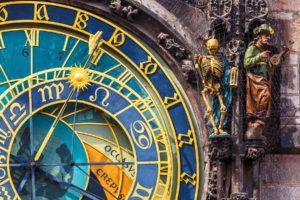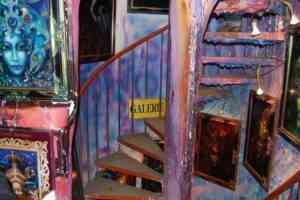Fodor's Expert Review Kostel sv. Mikuláše
With its dynamic curves, this church is arguably the purest and most ambitious example of high baroque in Prague. The celebrated architect Christoph Dientzenhofer began the Jesuit church in 1704 on the site of one of the more active Hussite churches of 15th-century Prague. Work on the building was taken over by his son Kilian Ignaz Dientzenhofer, who built the dome and presbytery. Anselmo Lurago completed the whole thing in 1755 by adding the bell tower. The juxtaposition of the broad, full-bodied dome with the slender bell tower is one of the many striking architectural contrasts that mark the Prague skyline. Inside, the vast pink-and-green space is impossible to take in with a single glance. Every corner bristles with life, guiding the eye first to the dramatic statues, then to the hectic frescoes, and on to the shining faux-marble pillars. Many of the statues are the work of Ignaz Platzer and constitute his last blaze of success. Platzer's workshop was forced to declare bankruptcy... READ MORE
With its dynamic curves, this church is arguably the purest and most ambitious example of high baroque in Prague. The celebrated architect Christoph Dientzenhofer began the Jesuit church in 1704 on the site of one of the more active Hussite churches of 15th-century Prague. Work on the building was taken over by his son Kilian Ignaz Dientzenhofer, who built the dome and presbytery. Anselmo Lurago completed the whole thing in 1755 by adding the bell tower. The juxtaposition of the broad, full-bodied dome with the slender bell tower is one of the many striking architectural contrasts that mark the Prague skyline. Inside, the vast pink-and-green space is impossible to take in with a single glance. Every corner bristles with life, guiding the eye first to the dramatic statues, then to the hectic frescoes, and on to the shining faux-marble pillars. Many of the statues are the work of Ignaz Platzer and constitute his last blaze of success. Platzer's workshop was forced to declare bankruptcy when the centralizing and secularizing reforms of Joseph II toward the end of the 18th century brought an end to the flamboyant baroque era. The tower, with an entrance on the side of the church, is open in summer. The church also hosts chamber music concerts in summer, which complement this eye-popping setting but do not reflect the true caliber of classical music in Prague. For that, check the schedule posted across the street at Líchtenštejnský palác (Liechtenstein Palace), where the faculty of HAMU, the city's premier music academy, sometimes also gives performances.
READ LESS







